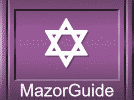

|
||||||||||||||||||||||
|
The Torah's
Weekly Portions
In last week's discussion, I pointed out that the word Sh'mot meaning names is far more appropriate and accurate for this Sefer than the word Exodus. Vav:yud-dalet (6:14) begins a listing of the names of the current generation of descendants from the twelve sons of Yaakov. This will be repeated again throughout the coming Parshahs. This Parshah discusses the first seven of the Ten Plagues that will eventually lead to the release of the Ivri'im (Hebrews) from Mitzrayim (Egypt). According to the Stone Edition Chumash, the ten plagues are three sets of three plagues and the tenth and final plague - the death of the firstborn. The first three plagues prove that Hashem exists. The second three establish that His influence and interest extends to both earthly matters and our personal affairs. The third makes it clear that G-d is supreme over all. When we read this Parshah, we see some really interesting points. In each set of three plagues, the first two are preceded by a warning from Moshe Rabbeinu (Moses) to Paro (Pharaoh). The third in each group is not. According to the biblical commentator, Malbim, "When [Paro] ignored [the warnings, the two plagues became 'witnesses' that established the intended point [referenced in the preceding paragraph]. The third plague in each series was not preceded by a warning; the point having been made and proven, the third plague came as a punishment to Paro and his people for not heeding the message that had been delivered forcefully and undeniably." In order, the ten plagues are:
This Parshah has more. The first question that stood out was about the warnings. A follow-up question might be about Paro's responses to the plagues. Again, when reading the Parshah, we can see that at times Paro was quite adamant that plague or no plague, the Ivri'im would not be leaving Goshen. At other times, Paro relented, told Moshe that they could go and then later changed his mind. What was the difference? The commentator, Or Chaim, explains that the difference is in whether Paro sees his life as being threatened. Again, the Stone Edition Chumash, provides concise explanations:
There is a third item that is interesting to look at in this Parshah. It relates specifically to the Plague of Hail but can be generalized beyond to all of the plagues. At Tet:chav-vav (9:26), it says, "Only in the land of Goshen, where the Children of Israel were, there was no hail." That Hashem would protect the Hebrews from the plagues would be obvious. However, this one example is unique. After all, the weather and atmosphere of Goshen would be no different than the other parts of Mitzrayim. Perhaps it is from this, that we can take a great lesson.
________
Back to
Torah Portions Archive
|
|
||||||||||||||||||||
|
||||||||||||||||||||||















